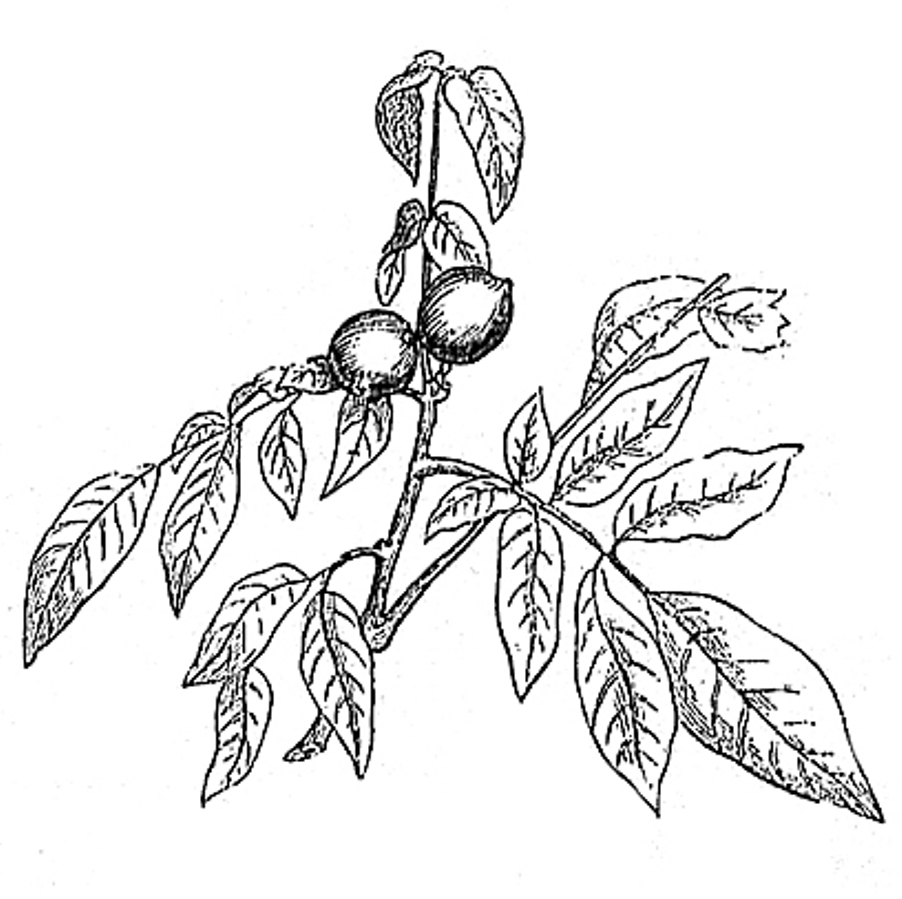Pterocarya fraxinifolia
Pterocarya fraxinifolia
The Wingnut or Caucasian Walnut (Pterocarya fraxinifolia (Poir.) Spach) is an arboreal species belonging to the Juglandaceae family.
Systematic –
From the systematic point of view it belongs to the Eukaryota Domain, Kingdom Plantae, Magnoliophyta Division, Magnoliopsida Class, Fagales Order, Juglandaceae Family and therefore to the Genus Pterocarya and to the Pt. Fraxinifolia Species.
Etymology –
The term Pterocarya comes from the Greek πτερóν pterόn ala and from κάρυον cáryon walnut: for the fruits consisting of winged nuculas. The specific epithet fraxinifolia comes from Fraxinus (name in classic Latin of the ash tree in Virgil and others, derived from the Greek φράξο phráxo hedge, close: tree suitable for forming hedges) ash and folium leaf: then with leaves similar to those of the ash.
Geographic Distribution and Habitat –
The Walnut of the Caucasus is a large tree native to Western Asia and, precisely, an area located between Armenia, Azerbaijan, Georgia, Iran, Russia and Turkey. It was introduced in France in 1784 by the French botanist André Michaux and in Great Britain after 1800. It is cultivated in parks and gardens, especially in Northern Europe, where these majestic trees find a habitat more congenial to them, in the cool and humid climate. , characterized by heavy rains and colder temperatures.
Description –
The Pterocarya fraxinifolia is a tree that can reach 30 meters in height, with a foliage expanded horizontally and of an intense green color. In the younger specimens the rind is smooth and greyish; subsequently, as the years go by, it cracks longitudinally, becoming brownish. It has deciduous leaves, alternate, imparipinnate with 11-21 segments lanceolate with serrated edge, up to 30-50 cm long.
It is a monoecious species with small male flowers and arranged in linear spikes up to 10 cm long; the female flowers are gathered in greenish catkins up to 15 cm long; the latter are provided with a corolla which, after the pollination, grows to the point of enveloping the fruit (diclesio), which at maturity has two short coriaceous wings which facilitate its dispersion with the wind.
The leaves, long and pendulous, formed by numerous leaf segments, can be confused with those of ash, black walnut and Iloanthus. The fruits of the 4 species, if present, remove any doubt. Just look carefully at the gems, different in 4 cases: black in the ash, small and scarlatte nell’ailanto, nude and brown in the Pterocarya, light gray in black walnut.
Cultivation –
The Walnut of the Caucasus, due to the size of the root system, must be cultivated in deep, fertile, humid soils but with good drainage. The plant, for perfect growth, needs full sun. It is easily cultivated, withstands the elements and is almost immune to disease. The roots are very vigorous and can damage the road pavement. The wide crown, supported by a short trunk, does not make it a species suitable for road trees.
Uses and Traditions –
The Pterocarya fraxinifolia is called in English “wingnut”, that is winged nut, because of the small fruits that are surrounded by two green semicircular wings, and carried by slender pendulous catkins.
It is a plant with very decorative foliage, with lance-shaped leaves at the dentate margin, which in autumn take on a golden yellow color. This plant reaches considerable size over time, mainly as an isolated specimen. Because of its beauty, it is ideal grown in city parks near the ponds or in large squares. Its wood is light and durable so it is very appreciated for the construction of furniture.
Preparation Mode –
The Walnut of the Caucasus in addition to ornamental uses and for wood has no particular food or pharmaceutical uses.
Guido Bissanti
Sources
– Wikipedia, the free encyclopedia.
– Treben M., 2000. Health from the Pharmacy of the Lord, Advice and experience with medicinal herbs, Ennsthaler Publisher
– Pignatti S., 1982. Flora d’Italia, Edagricole, Bologna.
– Conti F., Abbate G., Alessandrini A., Blasi C. (edited by), 2005. An annotated checklist of the Italian vascular flora, Palombi Editore.
Warning: Pharmaceutical applications and alimurgical uses are indicated for informational purposes only and do not in any way represent a medical prescription; there is therefore no liability for their use for curative, aesthetic or food purposes.


